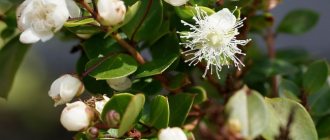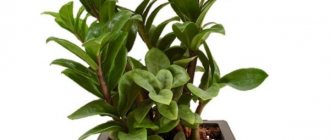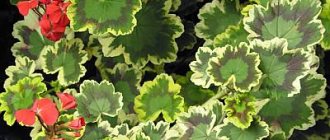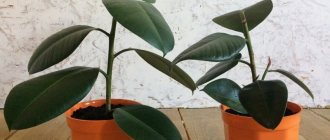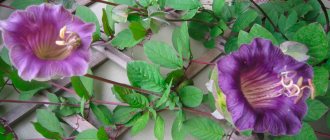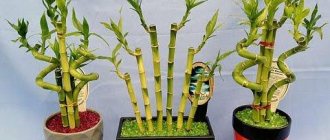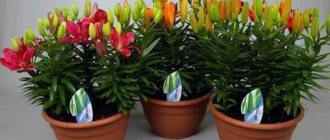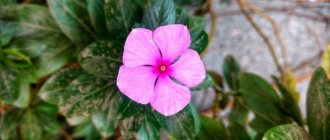The history of the origin of the myrtle flower
The history of the origin of the evergreen plant goes back to distant, ancient times. Who would have thought that this modest, unremarkable flower, according to legend, was with Adam when God expelled him from paradise. According to long-standing belief, the first man took myrtle with him to Earth from the Garden of Eden of Bliss. He decided that it would remind him on sinful earth of the wonderful life in Paradise. This is often why ancient people revered myrtle as a symbol of hope for a bright future.
Emblem of joy and sadness
In other sources, the birthplace of this flower was Persia. The legend says that the plant was brought by the Persians from Egypt. During the burial of the pharaohs, myrtle branches were carried by mourners. And Swedish, German and English princesses wove it into their hair or into their wedding bouquets. It symbolized strong love in marriage. Queen Victoria introduced this tradition during her reign. This tradition has been preserved to this day among the British.
Among the ancient Jews, myrtle was a symbol of peace and heaven. They also decorated the deceased with myrtle wreaths.
Greek goddesses and myrtle
The Greeks also respected myrtle. They considered it a reminder of the bad deeds that the goddess Minerva had done. One day the goddess decided to compete in a race with the nymph Myrsina and lost the argument to her. Minerva became angry with her favorite and killed her in anger. When the goddess realized what a terrible crime she had committed, the goddess began to beg the other gods to leave her some kind of memory of the nymph. The gods took pity on the goddess. A beautiful tree sprouted from the girl’s body, which later became known as myrtle. According to another legend, Venus wore a wreath made from this plant, which attracted the attention of King Paris.
General description of myrtle
Myrtle (Myrtus) is a genus of about 50 species belonging to the Myrtaceae family. Recently, there has been constant debate about the taxonomy of culture. Thanks to modern research methods, many species are isolated into separate genera or transferred to closely related ones. Some scientists attribute only the Common Myrtle (Myrtus communis) and the Saharan Myrtus (Myrtus nivellei) to Myrtus.
It is believed that the center of the spread of the culture is located in the Mediterranean, North Africa and the Azores. Now myrtles grow in nature in addition to the indicated regions in Southwestern Europe, Florida (USA), Southern England, West Africa, Asia Minor and South Asia, and the Caribbean. Small plantings can be found on the South Coast, the Black Sea coast of the Caucasus, and the Absheron Peninsula.
Comment!
The spread of the crop is hampered by two factors: increased humidity requirements and low frost resistance. Even with a short-term drop in temperature to -9° C, the plant freezes severely and may die.
The genus Myrtle includes evergreen trees and shrubs growing at an average speed, reaching a height of 1.5-5 m, with a width of 1-3 m. Dense branches form a compact crown. Depending on the species, shoots can be tetrahedral or round, bare or slightly pubescent.
Blooming myrtle tree
The leaves are opposite, simple, with a solid edge, a pronounced central vein, pointed tip and base, located on short petioles. Their shape is ovate-lanceolate, the texture is dense, in some species leathery, the length is from 2 to 5 cm with a width of 1-2.5 cm. The upper part of the leaves is dark green, glossy, the lower part is light green.
Interesting!
Myrtle is a rather flexible crop. It is noteworthy that even in plants obtained from cuttings of the same tree, the rate of development and leaf size may differ.
Despite their dense texture, myrtle leaves are very delicate. Lightly rubbing them with your fingers releases aromatic oils with a pleasant, characteristic odor. The ether glands are located throughout the leaf and are clearly visible when it is held up to light.
All types of myrtle bloom long and profusely; for about 2 months in spring and summer, new buds constantly appear on the tree or shrub. They are located singly or collected in short racemes, have a simple but elegant shape: numerous stamens with large anthers rise above the round calyx. Flowers up to 2 cm in diameter are fragrant and pollinated by bees. Their color depends on the species, and can be cream, pink, white or yellow.
By the end of summer, oval or spherical berries are formed. After ripening, they become dark blue, purple, and rarely white. Myrtle fruits can be eaten, but they are not tasty.
Flowers and fruits of myrtle
Botanical description of the plant
Myrtle is a plant belonging to the genus and family of the same name. Among its representatives (clove tree, guava, eucalyptus and others) there are many evergreen trees and shrubs, the plant mass of which contains essential oils. The homeland of the flower is considered to be the Mediterranean region, northern Africa and southern European countries.
In the wild, myrtle grows up to 4–5 meters; indoor specimens barely reach a meter. And that's not all. There are varieties that are true dwarfs. At home, myrtle is grown as a tree or bush. This plant is also well suited for bonsai formation. All representatives of the myrtle family are characterized by the following features:
- The leaves are leathery, elongated and pointed, with a shine, as if varnished. They are attached to the stems using short petioles. In dwarf varieties their length is several millimeters.
- The flowers are white, cream, pinkish, and can grow singly or in inflorescences. They can be simple or terry. Some species have many stamens on long stalks and the flowers resemble furballs.
- The fruits are berries with a dozen seeds. We should not confuse it with the “African myrtle”, or more precisely with the African myrtle, a plant from a different family, which after flowering produces purple berries with a single seed.
The plant looks great in any interior, which is why designers value it so much. Myrtle does not require particularly complicated care, and these graceful, delicate bushes bring a lot of benefits. The substances it releases are capable of destroying pathogenic microbes, purifying the air in the room. Therefore, myrtle is often placed in bedrooms and children's rooms. It can be found in offices and various offices. It is believed that the plant increases performance and also has a positive effect on the microclimate in the team.
The healing properties of myrtle have been known since ancient times. With its help, intestinal diseases and colds were treated, wounds were healed, and the skin was rejuvenated.
Modern research has proven the effectiveness of products prepared from this plant. Among other things, they are used to combat tumors, stimulate mental activity and strengthen the heart, and much more. The myrtle flower is used as additives and seasonings for various dishes. And its tonic, anti-inflammatory and soothing properties came in handy in the cosmetics industry.
Characteristics of culture
- It belongs to the genus of evergreen woody plants. Myrtle is great for bonsai.
- Flower/fruit color: Flowers can be of different shades: white, pink or cream. The fruit is a small black berry.
- Leaf color: The foliage is dark green, the leaves are oval in shape.
- Requirement for sun: The myrtle tree loves light very much, but does not tolerate direct sunlight.
- Size: In nature, the myrtle tree can grow up to 2 meters. At home, this flower grows no more than a meter.
- Flowering: Many stamens create an amazing visual effect, as if making the plant more delicate and weightless. With proper care, the tree is covered with flowers.
- Aroma: The fragrance of myrtle oil can be compared to an exquisite perfume. Slightly bitter, with a hint of eucalyptus. Fresh pleasant aroma.
Such a beautiful tree as myrtle looks very harmonious in any room. Growing it at home is not so difficult; the most important thing is to know all the nuances of this process. If treated correctly, myrtle will delight you with lush blooms and a pleasant aroma.
Caring for myrtle
The myrtle plant is unpretentious in care. Compact bushes and trees take up little space and are suitable for growing in even the smallest spaces. The main thing is to comply with a few simple conditions. And then Adam’s tree will grow for you for many years.
Soil for planting
The plant shows its non-conflict character even when choosing soils. Any substrate will do, as long as it is light and well-drained. You can pick up ready-made soil in a specialized store.
Experienced people who have grown more than one flower prefer to make the soil mixture themselves, adding the necessary ingredients to it. For example, you can take sand, turf soil, coal, vermicompost and coconut substrate in equal parts. A composition of peat, sand and humus is also suitable. But ordinary greenhouse soil also performs well. When planting myrtle in a pot, be sure to lay a drainage layer.
Lighting and temperature
Indoor myrtle loves bright, diffused light, so the best place for it would be window sills on the east and west sides of the house. If the flower is oriented to the south, then during especially hot hours in direct sunlight, the greenery of the myrtle should be slightly shaded. In summer, the plant is taken for a walk on the balcony or in the yard, also choosing a place where there will be no scorching sun.
Myrtle is a plant that was originally grown in greenhouses and winter gardens. Only then did the flower growers decide to move it into the rooms. In summer, the flower feels good at home even in the heat, you just need to increase watering and spraying.
In winter, it is useful to move the crop to a cooler place. Nothing will happen to him even at temperatures below 10 C. This could be a closed loggia, an insulated veranda or a winter garden. Such a cool winter will guarantee more active growth and lush flowering. If in winter you leave a flower, the same myrtle communis, in an ordinary room at room temperature, its leaves may fly off. But good care and moderate watering will return the plant to full development. True, there may not be any flowering this season.
Watering and air humidity
From spring to autumn during the growing season, the flower requires abundant watering. You need to wait until the top layer of soil in the pot dries, and only then water the plant. You shouldn’t create a real swamp inside either. In this case, the root system of the common myrtle will rot and the plant may die. To prevent this from happening, the pot must have drainage holes and a drainage layer that does not allow the liquid to stagnate. In winter, watering is reduced, but the soil should not be allowed to dry out completely. Water the flowers with settled water at room temperature.
Coming from the tropics, myrtle needs high air humidity. But many cultivated varieties are comfortable with the indoor microclimate. When caring for myrtle at home in hot weather, it would also be useful to spray the leaves of the flower. In winter, spraying is not carried out. For the procedure itself, it is advisable to take soft, settled water. Hard water needs to be softened, because over time it causes a white coating to appear on the soil and the leaves begin to turn yellow.
Feeding
From March to early September, myrtle needs additional care in the form of fertilizing. They are applied once every two weeks, some prefer to do it weekly. You can use a complex universal fertilizer for flowering plants with microelements, for example, Aquamarine, Mortar and others.
Indoor myrtle does not like calcium, so when purchasing fertilizers, make sure that it is not included.
How to root myrtle at home. Myrtle propagation at home
Popular materials
Today's:
How to root myrtle at home. Myrtle propagation at home
If the substrate is nevertheless dry, watering is used by immersing the pot in a container of water.
At the same time, you need to make sure that the water does not stagnate in the pan. You should carefully monitor air humidity. Although in the natural conditions of myrtle growth the air humidity rarely exceeds 60%, in rooms with central heating it is usually half that. From spring to autumn, the plant should be sprayed regularly. For spraying, you should use only soft, settled or filtered water. In winter, when kept cool, the plant is not sprayed.
From spring to autumn, myrtle is fertilized weekly with floral fertilizer.
Myrtle has a pronounced dormant period. Depending on the position in the room, myrtle is at rest from 3 (on the north window) to 1.5 (on the south) months.
My “Dutchman” has now begun to bloom
Recommendations for caring for the Myrtle plant:
Illumination: Light-loving, shading is needed only on a summer afternoon.
Watering regime: Abundant during the growth period, sparse in winter, especially if the plant is kept cool.
Air humidity: Requires frequent spraying, especially in warm rooms.
In the summer it is better to place it in fresh air (in the garden or on the balcony).
Temperature: In summer the temperature should be moderate, in winter cool 8-10°C.
Soil: Recommended soil mixture: 2-3 parts turf, 1 part peat soil, 1 part humus, 1 part sand. During the growth period, it needs to be fertilized once every 2 weeks with complex fertilizers (“Giant”, “Rainbow”, “Ideal”, etc.) For mature trees, humus can be added once a summer.
Propagation: Stem cuttings, seeds.
Transplantation: Young plants are replanted annually, adults older than three years are replanted after two years, but the top layer of soil is replaced annually.
Pests: affected by scale insects (brown plaques appear on leaves and stems, leaving a sticky discharge), spider mites (in dry air, leaves and stems are entwined with cobwebs).
The plant can be helped by treating it with a soap solution, warm washing and spraying with Actellik (1-2 ml per liter of water).
Once upon a time, the common myrtle was very popular in indoor culture, since the conditions ensured its good development and regular flowering. With the advent of central heating in homes, the popularity of myrtle decreased significantly, because this Mediterranean species requires very light and cool (about +5 degrees) content for normal growth and development in winter.
How to root myrtle correctly. Myrtle - growing features
Myrtle is grown at home in two ways - from seeds or apical cuttings. Those plants that are commercially available are most often obtained by cuttings. At home, if you want to grow myrtle yourself, you can use both methods.
Using seeds
Propagation of myrtle by seeds is not the most effective, but it is still used by amateur gardeners. The seeds are planted in early spring in a pre-prepared light substrate, which is made up of peat and sand, taken in equal quantities. A 10 cm layer of soil is poured into the planting box. Next, seeds are sown on it and covered with 4 cm thick soil on top. After this, the soil is thoroughly moistened and the box is covered with glass. The seed germination temperature should not be lower than +20 degrees. To ventilate, the glass must be raised once a day for 4-5 minutes. Seeds germinate in about 2 weeks. If the seedlings are too dense, they are thinned out.
Plants dive when they have 3 leaves.
30 days after germination, the first fertilizing with nitrogen fertilizer in a weak concentration is carried out. Subsequent fertilizing is carried out once a month, alternating complex mineral fertilizing and organic fertilizer.
By cuttings
Cuttings allow you to get a new plant that will fully retain its parental properties. Cuttings can only be taken from healthy myrtle. You should not take shoots that are too young for them. Only semi-lignified shoots are used for cuttings. The cut, which is made at an angle of 45 degrees, is treated with root to stimulate the formation of roots. Afterwards, the cutting is placed in the soil, which must be constantly moist. When everything goes right, the cutting takes root and a new plant begins to develop. If you miss a moment and the soil in the pot dries out, the cuttings will not be able to put out roots, even after the soil moisture is restored. After rooting, care will be the same as for an adult plant.
How to root a myrtle branch. Myrtle cuttings
Myrtle is a unique indoor plant that perfectly cleanses the air of germs, filling it with purity and freshness. Myrtle essential oil is a natural aphrodisiac that can bring new passion to a relationship. Myrtle oil is also successfully used in cosmetology to treat oily skin problems.
Today we will talk about
How to grow myrtle from cuttings
In fact, myrtle is a very capricious plant that requires special attention. This indoor shrub prefers to grow in greenhouses, but flower growers do not despair and find the best ways to grow myrtle at home. I would like to note that it is more successful to propagate myrtle by seed, but purchased seeds do not always have good germination, and the shelf life of myrtle seeds is very short. But if you have the opportunity to take a cutting of this plant for propagation, we will tell you how to carry out myrtle cuttings.
So, cuttings should be taken from last year’s branches that are at least 10 cm in size and must be woody. Young green branches most often take root poorly, or even die. The cut cuttings are treated with growth stimulants and planted in very fertile soil in a small pot. Before planting, it is imperative to build drainage in the container from expanded clay or pebbles of different sizes so that excess water does not stagnate in the soil. The cuttings should be buried 5 cm.
In order for the rooting of myrtle cuttings to be successful, the plant itself and the soil around the cuttings are also sprayed with growth stimulants. The soil should be moderately moist. Then a mini-greenhouse is built from a simple plastic bottle by cutting the bottle in half. Cover the plant with half a bottle and press it slightly into the ground. The greenhouse effect formed under the bottle will prevent moisture from evaporating, and the cuttings will be constantly wet. Heat and moisture will do their job - and soon the young myrtle will take root.
It should be noted that in order for the propagation of myrtle by cuttings to be successful, it is necessary to remove condensation from the walls of the bottle and water the soil more often. Cuttings take root in about two months, but with good care this can happen earlier.
Video Indoor flowers. How to root myrtle
The myrtle has dropped its leaves. Diseases
Most problems with this plant are caused by improper care; myrtle diseases most often manifest themselves in the drying and falling of leaves, and less often in the appearance of spots on them.
IMPORTANT: Myrtle must be frequently but moderately watered and fertilized every summer, regardless of its type.
If your myrtle leaves or ends of shoots have turned black, then the reason is excessive watering: by constantly flooding the flower, you do not allow the roots to receive oxygen, which leads to their rotting.
This, in turn, has a bad effect on the health of the plant crown.
There are two possible solutions: loosen the soil and water the flower less often, or replant it in drier soil (with a lower content of moisture-intensive components).
Transplanting myrtle
Young plants can be replanted annually. Although myrtle is characterized by slow growth, the root system increases and requires more and more space. Older specimens can live in one pot for 2–3 years without replanting.
The reasons for transplantation may also be the following:
- Purchasing a plant in a store where it was in a shipping pot.
- The appearance of insect pests in the soil and on the flower itself.
- Plant disease.
We choose a new place of residence for the flower from November to March. At this time, the common myrtle is dormant, and replanting will not have any unpleasant effects on the plant. We select a new container slightly larger than the previous one.
After purchasing the plant, you need to give it some time to adapt, and then be sure to transplant it into a new pot and new substrate. Both the shipping container and the land in it are designed for only a short period of sales. Therefore, for a new planting, we select a universal soil for flowers or create our own soil mixture.
When replanting, first remove the plant with the entire earthen lump. Pre-watering is not necessary. We hold the myrtle flower by the base of the stem, turn it down and carefully remove it from the pot. We lower it into the center of the new container and sprinkle it with earth on all sides. The base of the trunk should be above the soil surface. We water the newly planted plant, and lay coconut fiber or vermiculite on top of the soil.
If the replanting is caused by a myrtle disease or the appearance of insects, it is worth removing all the old soil, rinsing the roots in a weak solution of potassium permanganate, removing diseased and damaged ones, and replanting them in new, moist soil. Watering and fertilizing should be postponed for some time. If the transplant is caused by the formation of myrtle bonsai, then part of the root system (no more than one third) must be removed.
Transplanting a myrtle tree
A young myrtle tree should be replanted at least once a year. An adult plant can be replanted every three years. The transplant should be done in the spring. The container for the flower must be selected with a wide drainage hole.
It is better to purchase a substrate for myrtle in a store . When replanting, its roots should be freed from the soil from the old pot and placed in a new one. The trunk of the tree itself should not be buried in the ground, because the myrtle may become diseased. At the end of transplanting, it should be watered and sprayed.
This video shows the process of transplanting myrtle:
Pruning myrtle
Myrtle easily tolerates both pruning and pinching. Both procedures are done in order to give the plant the required shape. Removing some of the shoots stimulates the growth of new branches and more luxuriant flowering. The main thing is not to get carried away and observe moderation. Removing a large number of shoots at once can have an adverse effect on the plant and will delay flowering.
If some of the shoots are not removed from a young small-leaved myrtle or another species, then as a result it will have the traditional pyramidal shape. For those who want to have a somewhat unusual plant, pruning comes to the rescue. By pinching or cutting off the main shoot at the very beginning of growth, we get a fluffy bush. By removing side shoots, you can form the myrtle crown in the form of a ball, cube and other geometric shapes.
Small-leaved varieties are perfect for forming myrtle into a bonsai or dwarf tree. The original bends of the trunk and branches are obtained by tightening them with rigid wire, and the crown is created by trimming the lower part of the shoots. They begin to create bonsai when the young shoots stretch up to 10 cm.
Pruning is carried out at the very beginning of spring, when the plant has moved away from winter dormancy. After the procedure, it is worth stimulating the flower by adding fertilizer to the soil. Such extraordinary feeding does not replace, but complements the scheduled feeding schedule. In the year after spring pruning, the plant may not bloom. But if you want to see beautiful buds every year, then you can remove some of the shoots in the summer after flowering has ended.
How to propagate myrtle at home from cuttings
The beautiful myrtle tree purifies the air in the room and has a beneficial effect on a person, calming him down. An experienced gardener knows how to propagate myrtle at home. There are two main methods - cuttings and seed germination. These procedures will be of interest to anyone who already has a tree growing at home.
Reproduction by cuttings
Many flower growers are interested in such a legendary and exotic plant as myrtle: propagation at home by cuttings will allow you not to throw away all the cut shoots, but to give one of them a chance to live.
It is very easy to propagate myrtle.
Spring and summer are ideal for propagating myrtle from cuttings. May and August are best suited for this purpose, but the procedure can be carried out in other months. In warm weather, the cuttings will quickly take root and grow. But in the fall, when it quickly gets colder, the branches have no chance of rooting, so at this time of year you cannot propagate plants by cuttings. Winter plantings are not for tropical trees.
Attention! A tree such as myrtle will require a careful and responsible attitude: propagation by cuttings is carried out immediately after the planned pruning of its crown.
Where to get cuttings from and how to prepare them:
- Disinfect garden shears or pruning shears to avoid introducing infection into the plant.
- Cut off a strong, healthy shoot. You can cut off both green and woody shoots. But we must remember that green branches take root faster.
- Separate a cutting 12–15 cm long from it and remove the leaves from its lower half.
- It is advisable to plant the branch immediately because it can be stored for no longer than 24 hours. To do this, wrap it in a damp cloth.
- Myrtle cuttings are treated with a root growth stimulator. You can put it in water in which this drug is dissolved for several hours.
- Place drainage: pour perlite and vermiculite into the bottom of the pot or box. You will need a pot with a drainage hole to prevent water from pooling near the roots.
- Prepare the substrate: mix turf (30%), humus (20%), peat (30%) and sand (20%). If this is not possible, use greenhouse soil.
- The soil is watered generously with water, which must first be left to settle for 24 hours.
- The cuttings are carefully inserted into the ground to a depth of 3 cm.
- The soil is compacted.
- The top of the seedlings is covered with glass or a plastic bottle with the neck cut off.
- The box is placed in a warm place, protected from sunlight and bright light.
- Once a day, the greenhouse is removed and the myrtle is allowed to ventilate.
- It is necessary to carefully observe how the young myrtle grows: rooting of cuttings occurs within 1 month.
Myrtle propagation
Like many indoor plants, myrtle can be propagated in two ways: seeds and cuttings. The first method is quite slow and as a result you can get a plant that does not have the varietal characteristics of the mother bush. Propagation by cuttings allows you to get an adult plant much earlier.
Propagation by seeds
For sowing, prepare a shallow container, fill it with peat and sand, taken in equal proportions. Place the seeds on the soil and sprinkle them in a thin layer. Keep the container covered in a warm place until the first shoots appear. Don’t forget to ventilate the mini-greenhouse, removing moisture from the walls.
2-3 true leaves have appeared, it’s time to pick up and transplant the sprouts into separate containers. After adaptation, small sprouts begin to actively develop and fill the pots with roots. We plant the grown bushes in permanent containers, and remember: such plants will produce flowers only after 4 years.
Propagation by cuttings
You can get young plants from cuttings in summer or winter. To do this, we specially cut off several shoots from the lower and middle partially woody branches. The shoots that remain after trimming the crown are also suitable. The length of such cuts should be from 5 to 10 cm. Some germinate cuttings in water, waiting for roots to form. But more often they are planted in the ground.
We cover the young seedlings with transparent plastic and place them in a warm place. It usually takes about a month for roots to appear. Fresh leaves have formed, which means everything is in order and it’s time to transplant the shoots into separate containers. Further care for myrtle is the same as described above.
The use of myrtle in folk medicine
Within the framework of folk medicine, the properties of the myrtle tree are appreciated - its leaves very often become ingredients in effective preparations for the treatment of various health problems.
Tincture
Various decoctions and infusions, including alcoholic ones, are made from myrtle leaves. They can be used for rinsing the mouth (to combat periodontal disease), for oral administration in case of infectious diseases, and for external use. The alcohol infusion is prepared according to general rules, without any special features - crushed leaves are poured with alcohol and infused in a dark place for one to two weeks.
Problems in growing myrtle and their solutions
Among the problems that gardeners face when growing myrtle are the following:
- The leaves are turning black . Most likely, the plant was flooded with water too often. It is worth changing the soil in the pot and strictly following the watering recommendations.
- The leaves are turning yellow . Perhaps it's a lack of moisture. If the days are hot, water the flower more often, but wait until the top layer of soil dries.
- Leaves become dull and curl . The location is poorly chosen; the flower is too hot here. There is a possibility of poor water quality. It is worth changing the place and watering the flower with filtered water.
- The stems stretch out, and the leaves become smaller and paler . Myrtle does not have enough light; the place where it grows is too dark for it. We are looking for a suitable place with good lighting.
- Has a sticky layer appeared on the leaves? This means that uninvited guests have appeared on the plant - scale insects. Insecticides will help get rid of them.
- Is the tree drying out and weakening, although there seems to be no reason for this? Perhaps the process of root rotting has begun. This happens from constantly moist soil in the pot. There is only one way out: replant the tree and at the same time wash the roots in a solution of potassium permanganate, removing the diseased parts. The sections are sprinkled with crushed charcoal.
Many myrtle diseases occur due to improper plant care. Once you set up watering, organize good lighting and the right temperature, many problems will disappear on their own.
Diseases and pests of myrtle
Myrtle diseases occur due to improper watering. It is important to constantly keep the soil moist, but to avoid stagnation of water in the flowerpot and tray itself. Excessive watering can trigger the onset of root rot, which will spread further and the plant will simply die. Due to dry air and insufficient watering, the foliage may turn yellow and fall off, but moderate watering will restore the plant. Also during this period, spider mites can attack. You recognize their appearance by the presence of cobwebs. The leaves, especially on the underside, need to be washed with water or a weak tobacco solution, sprayed with ground sulfur or insecticides applied (spray in the open air).
When scale insects appear on a plant, it may secrete resin and the leaves and stems become covered with dark spots. The plant can be treated with a soap and tobacco solution. If scale insects have already become clearly visible, soak a swab in vodka or denatured alcohol and remove the pests mechanically. Then treat with an insecticide or, more gently, with a soap solution to completely destroy the larvae.
If the leaves dry out and curl, most likely there are aphids - small green, black or gray insects located on the bottom of the leaf. They reproduce very quickly. Immediately treat with special preparations that are sold in flower shops.
Myrtle species
This noble flower has more than a hundred varieties. In the wild they can reach a height of 5 meters. But cultivated varieties are more miniature and compact; it is not without reason that bonsai trees are created on the basis of some of them.
The most popular types of this plant for indoor growing include:
Myrt communis . Another name for the flower is common. In indoor conditions, the plant can reach 60 cm or slightly higher. It looks like a small evergreen tree with elongated dense leaves. Flowers of this species have 5 petals and many white stamens on long stalks.
Small-leaved myrtle . Another dwarf individual, growing up to 50 cm. Valued for its graceful forms and dense greenery. The leaves are dense, shiny, growing densely on the shoots. It blooms long and profusely and can decorate any room.
Swamp myrtle (Cassandra) . A very pretty plant, the flowers of which are collected in bell-shaped inflorescences, reminiscent of lilies of the valley in appearance. The plant exudes the aroma of pine needles and is capable of purifying and disinfecting indoor air. The height of the plant reaches up to 1 meter. It got its name from the fact that the most favorable terrain for it is peat bogs. This species usually grows in North America and Eurasia. Bog myrtle has brown and gray shoots with scales. The leaves are elongated, the flowers are white.
Myrtle Hymen or “bride’s happiness” is a symbol of youth. This tall shrub, 3-5 meters high, has green, small leaves and white flowers. After the flowers fall, blue-black berries appear.
Large-leaved myrtle is an excellent antibacterial agent. Perfectly helps with throat diseases. Plant height is 3-4 meters. The stems are tetrahedral, the leaves are large, pointed and glossy, white, small flowers with five petals.
Myrtle blossom
Those who want to get myrtle flowers should know that to do this they should not prune the plant in the spring. In general, it is better to postpone pruning until flowering has ended.
The flowering period is the beginning and middle of summer, June-July. In order for the flowers to turn out beautiful, two rules must be followed:
- Provide proper care for the tree;
- Provide constant access to fresh air for the plant.
Inadequate care will lead to the development of diseases, and in this case there will be no need to talk about flowering. Flowering is also not observed when myrtle is kept indoors, where the air is predominantly stagnant.
The flowers themselves on the tree in question are arranged like this:
- Or singly in leaf axils;
- Or being collected in brushes.
There are usually 4-6 petals, but the flowers themselves are simple and double. The main part of the flowers is located in the upper part of the plant, since that is where the best illumination is.
What can myrtle cause?
If the plant is not maintained correctly, there is a chance that it will get sick or be attacked by pests.
| Manifestations on leaves | Cause | How to cure |
| Darkening, sticky coating. | Shield. | Remove the pest with a cotton swab dipped in soapy water. Treat with insecticide. |
| Drying. | Aphid. | Use insecticide. |
| A white cobweb appears at the bottom. | Spider mite. | Clean with soap or tobacco. Treat with insecticide. |
| White plaque. | Mealybug. | Remove the pest and use Aktaroy. |
| The upper part has light spots, the back side is dark. | Thrips. | Apply Actellik. |
| They dry up. | Root rot. | Cut off diseased roots and replant in uninfected soil. |
How to replant?
Young plants are replanted every year. Adult specimens that grow in large outdoor pots are not touched, only once every couple of years the top layer of soil to a depth of five centimeters is replaced.
How to replant myrtle correctly so as not to damage the root system? Take a pot and add a small layer of drainage to the bottom. You can use expanded clay, pebbles, crushed foam or brick chips. Drainage is necessary, as it will help prevent rotting of the root system, preventing moisture stagnation. Water the soil in an old myrtle pot so that it gets wet and makes it easier to remove the plant from the pot. You can water the plant in advance, a few hours before transplanting, then you won’t have to deal with too wet soil.
Carefully remove the plant from the pot along with the earthen lump. Do not shake off the old soil, as this can cause damage to the roots, which are very delicate and difficult to tolerate any intervention. Pour a small amount of prepared soil into a new pot, lower a lump of earth into it and fill the voids around the edges of the pot with new soil. As you fill the free space, compact the soil to avoid the appearance of air voids. After planting, water the plant and put it in a dark place for several days so that it can adapt to new conditions.
How to grow myrtle at home
To prevent the bush from dying, it is necessary to adhere to certain conditions.
| Season | Lighting | Humidity | Temperature |
| Spring | Myrtle needs bright light, but the north side should be avoided. | 60-70%. Frequent moisturizing is required. When flowering, avoid getting water on the buds. Rinse in the shower, then dry the soil from excess moisture. Place the pot on a tray with pebbles filled with water. | +20°C. The plant needs fresh air and ventilation. |
| Summer | Move into the shade during hot days. | Up to +25°C. | |
| Autumn | Place in the most illuminated places and use artificial lighting. As the days get shorter, the myrtle sheds its leaves. | Moderate - 50-60%, if the room temperature is low. In a warm place, at +20°C, humidity is 60-70%. You should also remove the wood from heating devices and moisten it in various ways: shower, spraying, etc. | +20…+25°C. If the plant was outside or on the balcony, gradually accustom it to the new temperature. |
| Winter | +12…+15°C, below +6°C the bush will die. If the temperature is above +15°C, the leaves will begin to fall. Avoid drafts. |
CHAMELACIUM - WAX MYRTLE: PLANTING AND CARE
chamelacium (wax myrtle) - photo
Once I saw a chamelacium plant at my friend’s house.
And I literally fell in love with him. Please advise how to plant and grow it at home?
Inna Pavlovna KRUTOVERTOVA
There is a lot to fall in love with this plant. Chamelacium, or wax myrtle, undoubtedly attracts the eye with its evergreen decoration. And when flowers still appear on the tree, the plant literally delights with its delicate beauty.
Characteristic
Wax myrtle is a rather low shrub that reaches a height of 0.5 m in the walls of a house. The leaves are narrow, needle-shaped, 2.5-4 cm in length, very reminiscent of needles. And in general, chamelacium is very similar to coniferous plants, which purify and moisturize the air, which is very useful for those who suffer from a dry cough. But myrtle is still different from conifers. It, like ordinary shrubs, sheds its leaves, and then again delights with its green decoration.
Myrtle flowers are small - white or pink, very fragrant, they cover the plant abundantly from late February to mid-June.
Caring - increased
Gardeners should be warned: this plant is quite difficult to grow at home. If you ignore some rules, you can say goodbye to your “ward,” who will die.
Caring for myrtle begins with the fact that it is necessary to determine in advance where the pot with this plant, which loves light, will stand. Moreover, the place should be one where there are no obstacles to the penetration of sunlight. And so that myrtle does not lose its attractiveness, it is recommended to turn on a special phytolamp after sunset.
And when filling the pot with soil, you should take into account that it must allow air and moisture to pass through well.
Reproduction
This plant is best planted in spring. If you decide to sow seeds, keep in mind that the probability of failure is very high, and there is a lot of hassle, and you will have to wait a very long time, so it is more effective to plant chamelacium cuttings. How to get it?
You need to carefully cut off the top of the branch and immediately place it in a jar of water, which should cover 1-2 cm of the cutting. Place the container in the brightest place and wait for the roots to appear. This can happen in 1.5 months. But the gardener may have a problem: not all shoots will produce roots. Therefore, it is recommended to trim several branches at once.
After the roots appear, you need to place the branch in the ground and cover it with film. You can immediately after cutting the cuttings, treating them with a root formation stimulator, in a mixture of peat and sand. As soon as the seedling takes root, you can care for it like an ordinary plant, naturally, having first removed the shelter.
Caring for myrtle is the same as for other indoor plants: watering, light, fertilizing. Water this crop as needed. The soil should remain moist and not dry out. They are fed with special fertilizers for myrtle, which are sold in flower shops. Do this once every 2-3 weeks. During the flowering period, the plant needs more nutrients, so myrtle should be fed twice as often.
